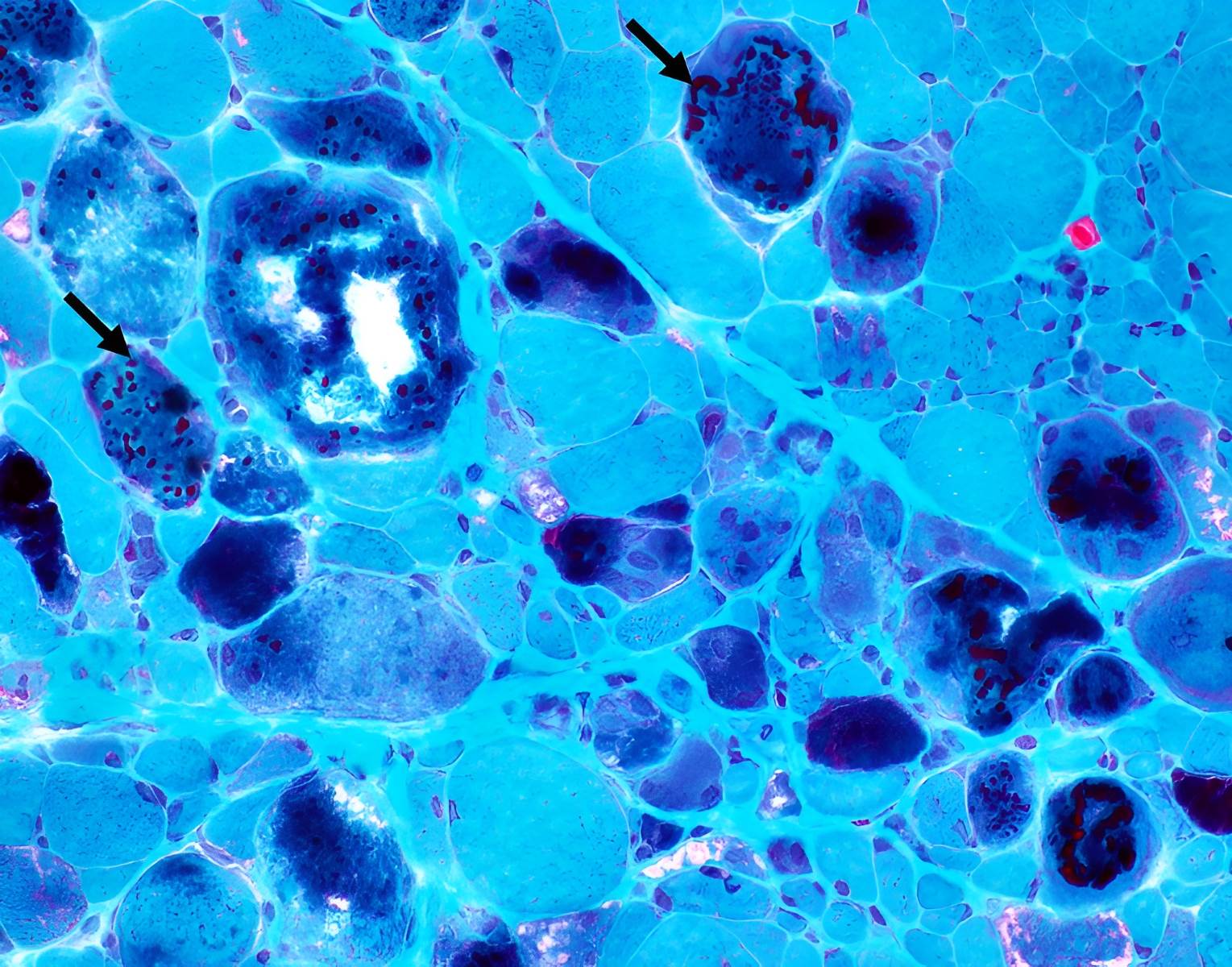
Cytoplasmic Body Myopathy is a rare muscle disorder that can affect people of all ages. This condition primarily impacts muscle function, leading to weakness and fatigue. Symptoms often include difficulty walking, muscle cramps, and sometimes even respiratory issues. Diagnosis usually involves muscle biopsies, genetic testing, and various imaging techniques. While there is no cure, treatments focus on managing symptoms and improving quality of life. Physical therapy, medications, and sometimes surgical interventions are common approaches. Understanding this condition can help those affected and their families navigate the challenges it presents. Let's dive into 30 intriguing facts about Cytoplasmic Body Myopathy.
Key Takeaways:
- Cytoplasmic Body Myopathy is a rare muscle disorder with symptoms like muscle weakness and difficulty breathing. Early diagnosis and a multidisciplinary approach to treatment can help manage the condition effectively.
- Understanding the genetic basis of Cytoplasmic Body Myopathy can provide insights into its causes and potential treatments. Support groups, regular medical follow-ups, and adaptive activities play a crucial role in managing the condition.
What is Cytoplasmic Body Myopathy?
Cytoplasmic Body Myopathy (CBM) is a rare muscle disorder. It affects skeletal muscles, leading to muscle weakness and other symptoms. Understanding CBM can help in managing the condition better.
- CBM is a type of myopathy, which means it primarily affects muscle tissue.
- The disorder is characterized by the presence of abnormal structures called cytoplasmic bodies within muscle cells.
- These cytoplasmic bodies are made up of proteins that clump together abnormally.
- CBM is considered a congenital condition, meaning it is present from birth.
- The exact cause of CBM is not fully understood, but it is believed to have a genetic component.
Symptoms of Cytoplasmic Body Myopathy
Recognizing the symptoms of CBM can lead to early diagnosis and better management. Symptoms can vary in severity and may affect different muscle groups.
- Muscle weakness is the most common symptom of CBM.
- Weakness often starts in the muscles closest to the trunk, such as the hips and shoulders.
- Some individuals may experience difficulty walking or climbing stairs.
- Fine motor skills, like writing or buttoning a shirt, can also be affected.
- In severe cases, respiratory muscles may be involved, leading to breathing difficulties.
Diagnosis of Cytoplasmic Body Myopathy
Diagnosing CBM involves a combination of clinical evaluation, imaging studies, and laboratory tests. Early and accurate diagnosis is crucial for managing the condition effectively.
- A muscle biopsy is often performed to identify the characteristic cytoplasmic bodies.
- Genetic testing can help identify mutations associated with CBM.
- Electromyography (EMG) may be used to assess muscle function.
- Blood tests can reveal elevated levels of muscle enzymes, indicating muscle damage.
- MRI scans can provide detailed images of muscle tissue, helping to identify abnormalities.
Treatment and Management of Cytoplasmic Body Myopathy
While there is no cure for CBM, various treatments can help manage symptoms and improve quality of life. A multidisciplinary approach is often required.
- Physical therapy can help maintain muscle strength and flexibility.
- Occupational therapy can assist with daily activities and improve fine motor skills.
- Respiratory therapy may be necessary for individuals with breathing difficulties.
- Medications, such as corticosteroids, can reduce inflammation and muscle damage.
- Assistive devices, like braces or wheelchairs, can aid mobility and independence.
Genetic Aspects of Cytoplasmic Body Myopathy
Understanding the genetic basis of CBM can provide insights into its causes and potential treatments. Research in this area is ongoing.
- CBM is often inherited in an autosomal recessive pattern, meaning both parents must carry a copy of the mutated gene.
- Mutations in the MYOT gene have been linked to CBM.
- Genetic counseling can help families understand the risks of passing CBM to their children.
- Prenatal testing is available for families with a known history of CBM.
- Advances in gene therapy hold promise for future treatments of genetic disorders like CBM.
Living with Cytoplasmic Body Myopathy
Living with CBM presents unique challenges, but with proper support and management, individuals can lead fulfilling lives. Community and family support play a crucial role.
- Support groups can provide emotional support and practical advice for individuals and families affected by CBM.
- Regular medical follow-ups are essential to monitor the progression of the disease and adjust treatments as needed.
- Adaptive sports and recreational activities can improve physical and mental well-being.
- Nutrition and a balanced diet can support overall health and muscle function.
- Mental health support, including counseling and therapy, can help individuals cope with the emotional aspects of living with a chronic condition.
Final Thoughts on Cytoplasmic Body Myopathy
Cytoplasmic Body Myopathy (CBM) is a rare muscle disorder that affects both children and adults. Understanding its symptoms, causes, and treatments can help those affected manage their condition better. CBM often leads to muscle weakness, fatigue, and difficulty with movement. Genetic mutations are usually the culprits behind this condition. While there's no cure, treatments like physical therapy, medications, and lifestyle changes can improve quality of life.
Staying informed and seeking support from medical professionals and communities can make a significant difference. Early diagnosis and intervention are crucial for managing symptoms effectively. If you or someone you know shows signs of CBM, consult a healthcare provider for proper evaluation and guidance. Knowledge and proactive care are key to living well with CBM.
Frequently Asked Questions
Was this page helpful?
Our commitment to delivering trustworthy and engaging content is at the heart of what we do. Each fact on our site is contributed by real users like you, bringing a wealth of diverse insights and information. To ensure the highest standards of accuracy and reliability, our dedicated editors meticulously review each submission. This process guarantees that the facts we share are not only fascinating but also credible. Trust in our commitment to quality and authenticity as you explore and learn with us.
